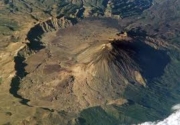Temporal gravity changes and surface deformations interpretation
Measurable temporal changes of gravity and deformations of earth's surface are indicators of dynamic processes inside the earth, such as those associated with movements of magma preceding volcanic eruptions. The observation, analysis and interpretation of surface gravity changes and vertical displacements of the topographic surface contribute to understanding the physics of magma reservoirs and the processes associated with volcanic activity.
Interpretation of gravity changes at Mayon stratovolcano, Philippines
Peter Vajda1, Ilya Prutkin2, Robert Tenzer3 and Gerhardt Jentzsch2
1 Geophysical Institute, Slov. Academy of Sci., Bratislava, Slovakia,
This email address is being protected from spambots. You need JavaScript enabled to view it.
2 Institute of Geosciences, Jena University, Jena, Germany
3 National School of Surveying, University of Otago, Dunedin, New Zealand
Gravimetric picture of the 2004 volcanic unrest on Teide, Tenerife, Canary islands
Gravity changes observed around Teide (Tenerife) between May 2004 and July 2005, due to the suspected reawakening of the volcano, were reinterpreted by us. Our objective was to seek multiple sources of the observed gravity signal. Our interpretation is based on the decomposition of the gravity signal into shallow and deep fields, and subsequent inversion of each field by means of 3D line segments. The shallow (near-surface) segments are interpreted as hydrothermal fluids. A short deep segment was found at the depth of about 6 km below sea level, interpreted as magma injection. Our results indicate that the 2004 volcanic unrest at the Central Volcanic Complex of Tenerife was a failed eruption.



